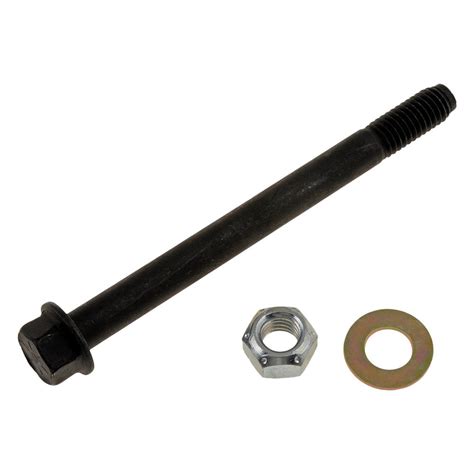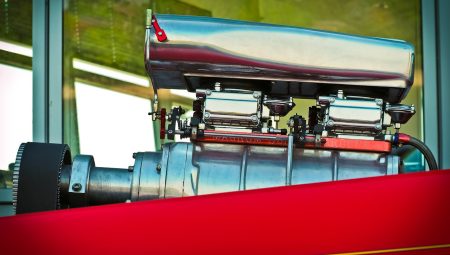Discover engine mount bolts, their types, installation importance, signs of wear, and how to replace them for optimal vehicle performance.When it comes to maintaining the integrity and performance of your vehicle, one often overlooked component is the engine mount bolt. These sturdy fasteners play a crucial role in securing the engine to the chassis, ensuring stability and minimizing vibrations. In this blog post, we will explore the various types of engine mount bolts, highlighting their specific functions and characteristics. We’ll also discuss the importance of proper installation, as a poorly fitted bolt can lead to serious issues down the line. Additionally, we’ll identify the signs of a worn-out engine mount bolt, allowing you to recognize potential problems early. Finally, we’ll provide a step-by-step guide on how to replace an engine mount bolt, empowering you to tackle this vital aspect of vehicle maintenance with confidence. Whether you’re a seasoned mechanic or a DIY enthusiast, this guide will equip you with the knowledge to keep your engine securely mounted and running smoothly.
What is an engine mount bolt?
An engine mount bolt is a crucial component of a vehicle’s engine mounting system, designed to secure the engine to the chassis, ensuring that the engine remains stable during operation. These bolts are typically made from high-strength materials that can withstand the intense vibrations and forces generated by the engine, thereby enhancing the overall performance and longevity of the vehicle. The engine mount itself, which houses these bolts, serves to isolate engine vibrations from the cabin, providing a quieter and more comfortable driving experience.
In terms of functionality, the engine mount bolt plays a pivotal role in maintaining the alignment of the engine, which is essential for optimal performance and efficiency. An improperly aligned engine can lead to excessive wear on various engine components and an increase in maintenance costs over time. To further illustrate this point, it is important to note that these bolts are often subjected to significant torque and shear forces, which is why their strength and integrity are paramount for the safe operation of the vehicle.
In conclusion, understanding what an engine mount bolt is and its function within the engine mounting system will not only help car owners appreciate the complexities of their vehicles but also underscore the importance of proper maintenance and timely replacement of worn-out bolts. Ignoring these components can lead to a cascade of issues that affect not only the engine but also the overall safety and reliability of the vehicle.
Types of engine mount bolts
When it comes to understanding engine mount bolts, it is essential to recognize that these critical components are not all the same; in fact, they can be categorized into several different types based on their design, material, and functionality.
One common type of engine mount bolt is the standard bolt which is typically made from steel or other durable materials providing a balance between strength and flexibility, allowing for the effective transfer of vibrations while maintaining the stability of the engine within the vehicle chassis. Another significant type includes high-tensile bolts, which are designed to withstand increased loads and stresses, making them ideal for high-performance vehicles that experience extreme driving conditions, thus reducing the chances of premature failure.
Furthermore, locking engine mount bolts are another variation that utilizes a locking mechanism to prevent loosening due to vibrations, which is particularly advantageous in scenarios involving heavy-duty applications or off-road vehicles where the forces acting on the engine mounts may be significantly amplified. In addition to these categories, rubber-mounted bolts also exist, where rubber is employed to absorb shocks and vibrations, enhancing passenger comfort while ensuring that the performance of the engine remains unimpeded.
A comprehensive understanding of the various types of engine mount bolts is crucial for mechanics and auto enthusiasts alike, as it allows for better decision-making regarding maintenance and replacements, ultimately contributing to the longevity and reliability of the vehicle’s engine assembly.
Importance of proper installation
When it comes to maintaining the overall functionality and safety of a vehicle, the importance of proper installation of engine mount bolts cannot be overstated, as these seemingly small components play a critical role in securing the engine to the chassis, thereby ensuring that all parts operate in unison without undue vibrations or movements that could lead to significant mechanical failures.
Improperly installed engine mount bolts can directly result in detrimental effects, such as increased engine vibration, excessive wear and tear on surrounding components, and even potential damage to the vehicle’s transmission system, demonstrating that these bolts are not merely a quick fix but rather integral to the engine’s stability and performance.
Additionally, adhering to the manufacturer’s specifications regarding torque settings and installation sequences is vital, as overlooking these guidelines can lead to a host of issues, including premature bolt fatigue and eventual failure, thus emphasizing that a meticulous installation process is paramount for the longevity of both the engine itself and the vehicle as a whole.
Signs of a worn-out engine mount bolt
As a crucial component in the vehicle’s engine mounting system, the engine mount bolt serves the essential purpose of securing the engine to the vehicle’s frame, preventing excessive vibrations and maintaining proper alignment under various operating conditions, and when this vital bolt begins to show signs of wear, it can lead to a range of issues that may compromise the vehicle’s performance and driving safety.
One of the most common signs indicating a worn-out engine mount bolt is an increase in vibration felt throughout the vehicle, which often manifests itself as a noticeable shaking of the steering wheel or the entire chassis, leading to discomfort for the driver and passengers alike; this is due to the inability of the mount to absorb engine vibrations efficiently, a situation that worsens over time if left unaddressed.
Another significant indicator of a failing engine mount bolt is the presence of unusual noises emanating from the engine compartment, such as clunking or thumping sounds that occur during acceleration or deceleration; these sounds arise from the movement of the engine, which has more freedom than it should due to the compromised integrity of the engine mount, causing loose components to collide and create these disturbing noises.
Finally, visual inspection may reveal signs of physical damage such as cracks or rust on the engine mount or bolts, suggesting that the materials have weakened due to prolonged exposure to engine heat and vibration, making it vital to regularly examine these components to ensure the longevity and performance of your vehicle; neglecting these warning signs can lead to severe engine misalignment or, in worst cases, catastrophic engine failure.
How to replace an engine mount bolt
Replacing an engine mount bolt is a vital process that ensures the stability and safety of the engine within a vehicle; this process not only enhances the performance of the vehicle but also prevents potential damage to various components of the engine and the vehicle frame.
The first step in this replacement procedure is to gather all necessary tools and materials, which typically include a socket wrench set, a torque wrench, replacement engine mount bolts, and safety equipment; once everything is ready, you should make sure that the vehicle is parked on a flat surface, and the emergency brake is engaged to prevent any unintended movement.
Afterward, it is essential to lift the vehicle using a jack and secure it with jack stands before removing the old engine mount bolts, which can often require a considerable amount of effort due to rust or age; once the bolts are removed, it is crucial to install the new engine mount bolts in accordance with the manufacturer’s specified torque settings to ensure proper installation and functionality, thus maintaining the overall integrity and performance of the engine.
Frequently Asked Questions
What is an engine mount bolt?
An engine mount bolt is a fastener used to secure the engine to the vehicle’s chassis, helping to absorb vibrations and provide stability.
Why are engine mount bolts important?
Engine mount bolts are crucial for maintaining the alignment and positioning of the engine, ensuring smooth operation and reducing the risk of damage to the engine and surrounding components.
What are the common materials used for engine mount bolts?
Engine mount bolts are commonly made from high-strength steel or alloy materials to withstand the stresses and vibrations of engine operation.
How do you know if engine mount bolts need replacement?
Signs that engine mount bolts may need replacement include excessive engine movement, unusual vibrations, or visible wear and rust on the bolts.
Can I replace engine mount bolts myself?
Yes, if you have basic mechanical knowledge and the proper tools, you can replace engine mount bolts yourself, but it’s important to follow the vehicle’s service manual for specific instructions.
What happens if an engine mount bolt breaks?
If an engine mount bolt breaks, it can lead to engine misalignment, increased vibrations, and potential damage to the engine or other components.
How often should engine mount bolts be checked?
It’s advisable to check engine mount bolts during regular maintenance inspections, particularly if you notice unusual noises or vibrations coming from the engine.





